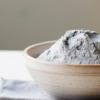Is it IBS or is it SIBO?
‘I’ve been told I have IBS and there isn’t anything I can do about it’. This is a common story for many IBS sufferers, the belief that the horrible symptoms they experience are something they just need to accept and live with.
Irritable Bowel Syndrome (IBS) is a condition that is defined by abdominal pain or discomfort and alterations in bowel motions (constipation and/or diarrhoea). Exactly what causes IBS symptoms is still unknown, although changes to the gut microbiota (yes, our gut is made up of more bugs than cells, there’s an entire ecosystem in there!) and immune system are known to be involved. It’s estimated that 15% of Australians are affected by IBS; that’s a whole lot of gut suffering going on!
SO IF THAT’S IBS, WHAT IS SIBO?
SIBO stands for small intestinal bacterial overgrowth, which is defined as an abnormal presence of excessive bacteria within the small intestine (we don’t normally find many bacteria here). You can probably see where I’m going with this one; just like with IBS, SIBO is also indicated by changes in the microbiota (our ‘gut bug ecosystem’, as I like to call it).
Not only this, the common symptoms of SIBO include:
- bloating (for the regular bloaters, this is a key one)
- constipation and/or diarrhoea
- abdominal cramping
- excessive flatulence
- burping
- reflux
- food sensitivities (famous FODMAPs)
- nutrient deficiencies (Iron & B12 we commonly see)
- food intolerances
If you know anything about IBS, you’ll recognise from that list that many of the symptoms seen with IBS are also hallmark symptoms
of SIBO. Research is also backing up this overlap, with up to 70% of people suffering with IBS, also testing positive to having SIBO.
That is, 15% of Australians are believed to be suffering with IBS, and up to 70% of those IBS sufferers are shown to be positive to SIBO…
SO HOW DO WE KNOW IF IT’S SIBO?
Well, therein lies the importance of testing! It is very important to test for SIBO, which is done through a simple breath test and can be simply ordered with your naturopath and completed in your own time at home. During the test, a solution is consumed before blowing into an enclosed bag, and the measurement of the specific gases created within the bag determine the results. There are three different solutions to take (lactulose, fructose, and glucose); when exposed to overgrowths of certain bacteria in the small intestine these solutions feed and ferment the bacteria, producing high levels of gas. You can test for any three of the solutions. I always like to start with my patients by testing all of them as, depending on the type of overgrowth, the production of the specific gases will not always occur if the right solution is not used in testing. The test looks for two gases specifically that are produced through the breath – methane and hydrogen – and, depending on the result, one of the three types of SIBO may be present: Hydrogen SIBO, Methane SIBO, or Hydrogen Sulphide SIBO.
To treat SIBO, we tend to use antimicrobials to remove the overgrowth of bacteria found within the small intestine. Using antimicrobials on the gut can be harsh, whether we are using mainstream antibiotics or herbal equivalent forms. Our gut is an ecosystem and a lot of the time these antimicrobials aren’t very specific, meaning that while they effectively kill the bad (which is great), they can also disrupt the good. Therefore, it’s important to understand what we’re dealing with – if there is an overgrowth there and, if so, what type of overgrowth – so that the right treatment is given. The treatment does vary depending on the type of SIBO that’s present (remember, there are three kinds), especially when heading down the natural route, the type of herbs, supplements, and dietary interventions prescribed may vary. This is important so that we can not only treat the SIBO and resolve the associated symptoms, but also prevent it from coming back in the future.
This piece is from our latest GHE Magazine; click here to view the magazine in full.






